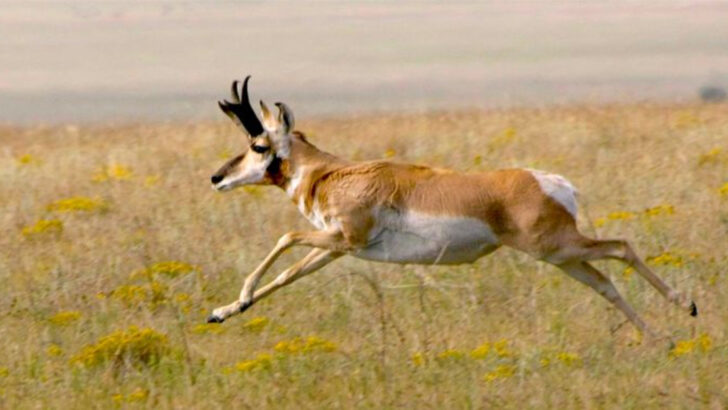Pronghorns are nature’s speed demons—blazing trails across the plains with jaw-dropping velocity!
Under endless skies, these swift marvels dash across open fields, leaving dust clouds in their wake. Their lean, muscular bodies are built for pure speed, shattering records with every stride.
Imagine witnessing a pronghorn hurtling past, a living blur that redefines what fast really means. Its powerful legs pound the earth, a reminder that nature can be both graceful and fierce.
Get ready to be amazed by 13 astonishing facts about the pronghorn’s unmatched speed. Prepare to have your mind blown by a creature that turns every sprint into a heart-stopping spectacle of raw, natural power.
Anatomical Marvel

The pronghorn is built for speed, with adaptations that make it a true anatomical marvel. Its large heart and lungs provide an efficient oxygen supply, while its muscular legs offer explosive power. Two long strides, and it can reach an impressive velocity. Additionally, its lightweight skeleton reduces drag, enhancing its swift movements. These features work in harmony, allowing the pronghorn to sustain high speeds over long distances. Not only is it fast, but its agility in turning and maneuvering sets it apart. This combination of speed and agility makes it a formidable survivor.
Top Speed
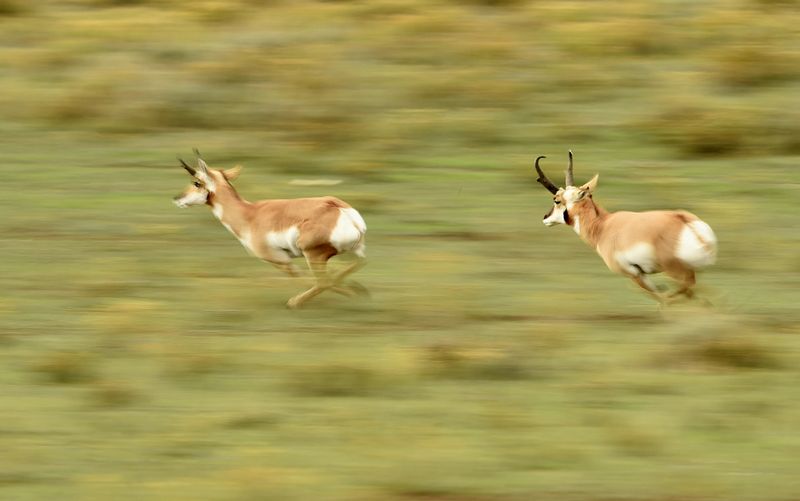
The pronghorn is capable of reaching speeds up to 55 miles per hour, making it the fastest land animal in North America. This top speed rivals even the cheetah, though the pronghorn can maintain its velocity over much longer distances. Such speed is essential for evading predators across the open plains. Unlike the cheetah, which tires quickly after a sprint, the pronghorn’s endurance allows it to keep going. This endurance is a significant evolutionary advantage, and it’s no wonder that the pronghorn has survived for millions of years.
Endurance Champion
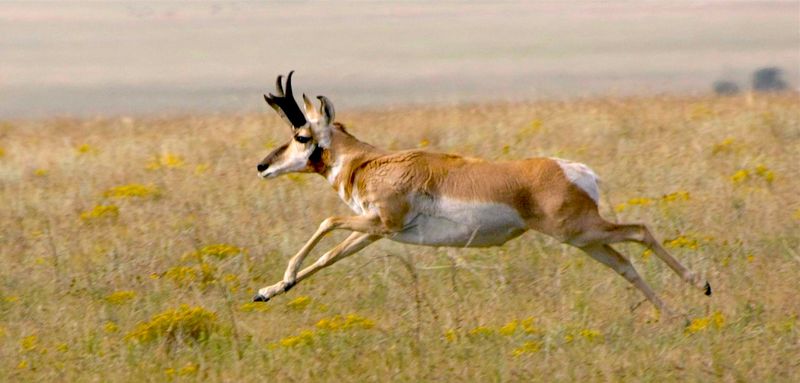
While many animals can sprint at high speeds, the pronghorn is an endurance champion. It can sustain a pace of 30 miles per hour for over 20 miles. This remarkable endurance stems from its efficient respiratory and cardiovascular systems. The ability to run fast and far helps the pronghorn escape predators that rely on short bursts of speed. Its endurance is not just for survival; it also plays a role in migration across vast distances. The pronghorn’s capacity to combine speed with endurance makes it a unique species in the animal kingdom.
Evolutionary Adaptation

The pronghorn’s speed is a result of evolutionary adaptations refined over millennia. Originally, these adaptations helped it outrun predators like the now-extinct American cheetah. Even as the threats have evolved, the pronghorn’s speed continues to be its greatest asset. Its evolutionary path showcases the power of natural selection, highlighting how species evolve to thrive in their environments. The pronghorn’s success story teaches valuable lessons about adaptation and survival. As environments change, its speed remains a key factor in its existence, demonstrating nature’s intricate design.
Unique Hooves
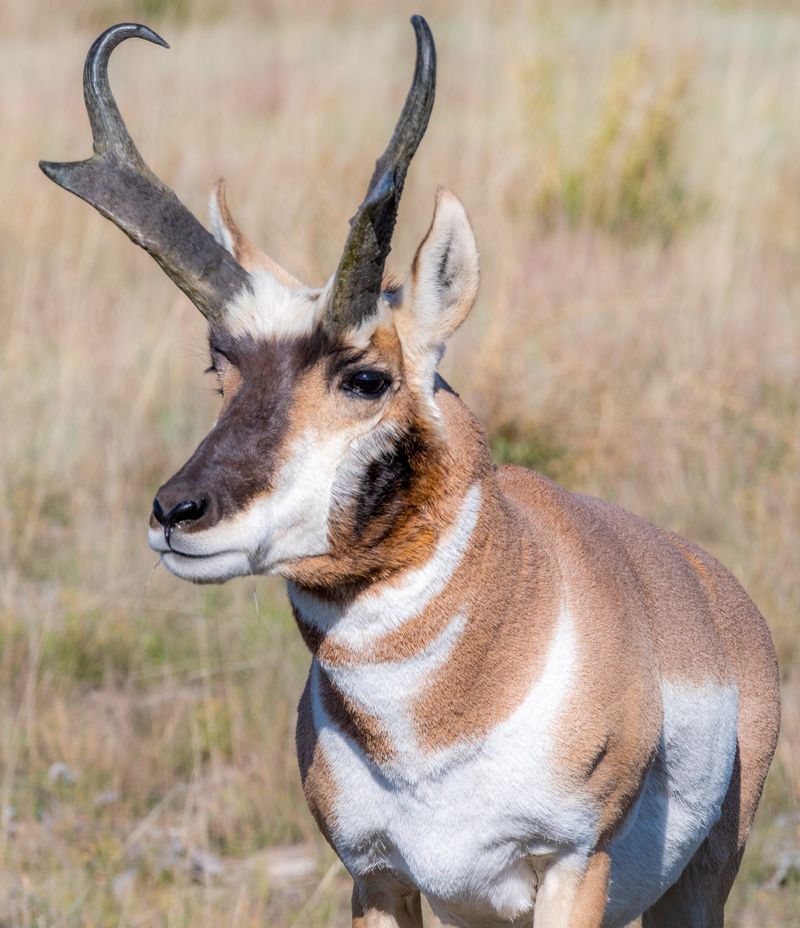
The pronghorn’s unique hooves contribute significantly to its speed. They are cushioned, allowing for swift and silent movement across uneven terrain. This adaptation reduces the impact on its legs, enhancing its ability to run at high speeds without tiring quickly. The hooves’ structure provides excellent traction, ensuring stability even while turning at top speeds. This feature is particularly advantageous in the diverse landscapes pronghorns inhabit. Through evolution, their hooves have become perfectly suited for survival in open terrains, showcasing another aspect of their remarkable speed capabilities.
Long-Distance Migration
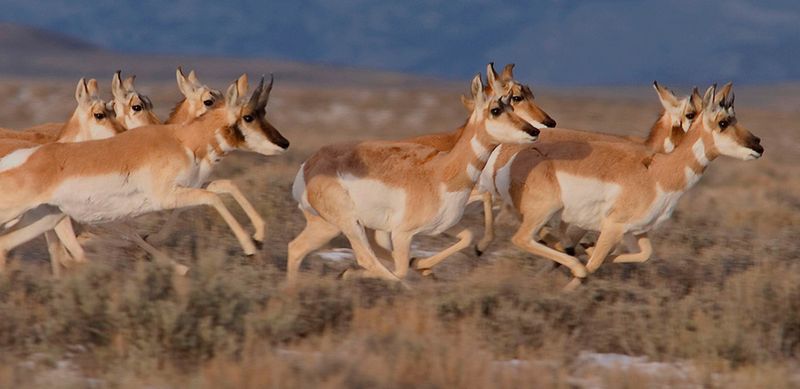
Pronghorns are known for long-distance migrations, a journey that demands both speed and endurance. Their annual migration spans hundreds of miles, a testament to their unmatched stamina. This migration is one of North America’s last remaining large-scale animal movements. The pronghorns’ ability to travel vast distances at high speeds ensures they find food and avoid harsh weather. Their migratory routes are deeply ingrained in their behavior, passed down through generations. This impressive journey highlights the pronghorn’s exceptional physical prowess and adaptability, key factors in their survival and ecological role.
Predator Evasion
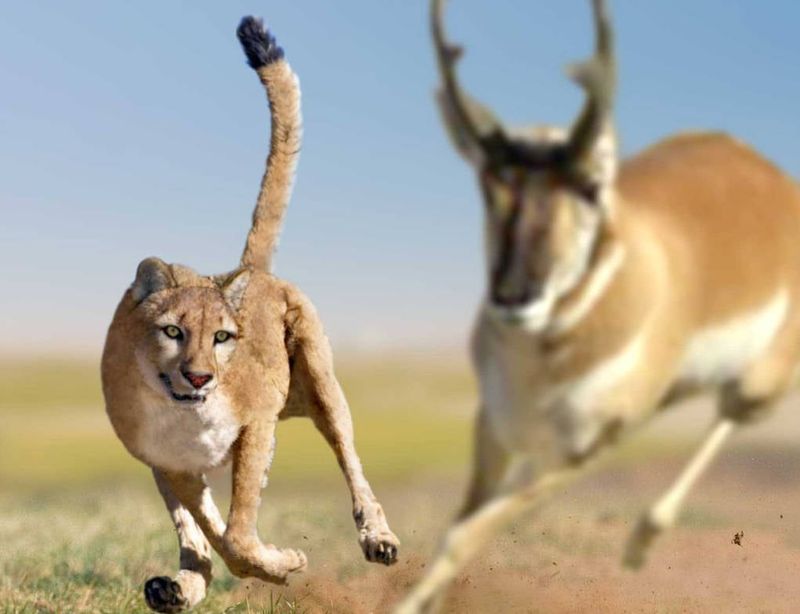
The pronghorn’s speed is its primary defense against predators. Capable of outpacing threats like coyotes and bobcats, it relies on both velocity and endurance. While other animals might rely on camouflage or strength, the pronghorn’s strategy is pure speed. This evolutionary defense mechanism allows it to thrive in open habitats where hiding places are scarce. Its keen eyesight and ability to outrun most threats give it a significant survival advantage. The pronghorn’s speed not only ensures its survival but also shapes the predator-prey dynamics of its ecosystem.
Lightweight Skeleton
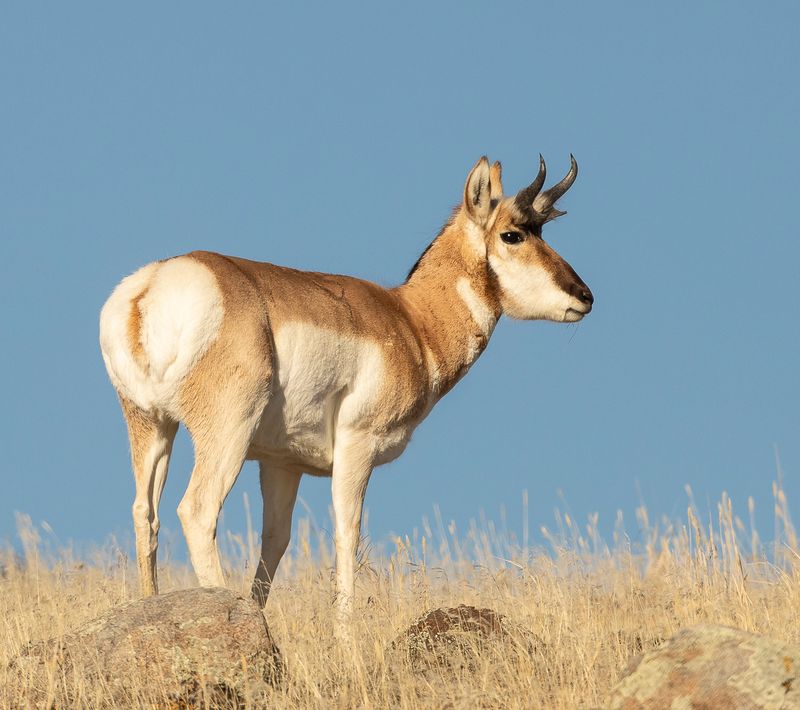
The lightweight skeleton of the pronghorn is integral to its speed. Composed of hollow bones, it reduces the overall weight, allowing for quicker acceleration. This structure is akin to that of birds, optimizing the pronghorn for high-speed pursuits. The skeletal design minimizes energy expenditure, enabling sustained speed over lengthy distances. This efficiency means the pronghorn can maintain its pace with minimal fatigue. The lightweight build, combined with muscular strength, constitutes a perfect formula for speed. By optimizing its bone structure, the pronghorn has mastered the art of swift movement.
Efficient Respiratory System
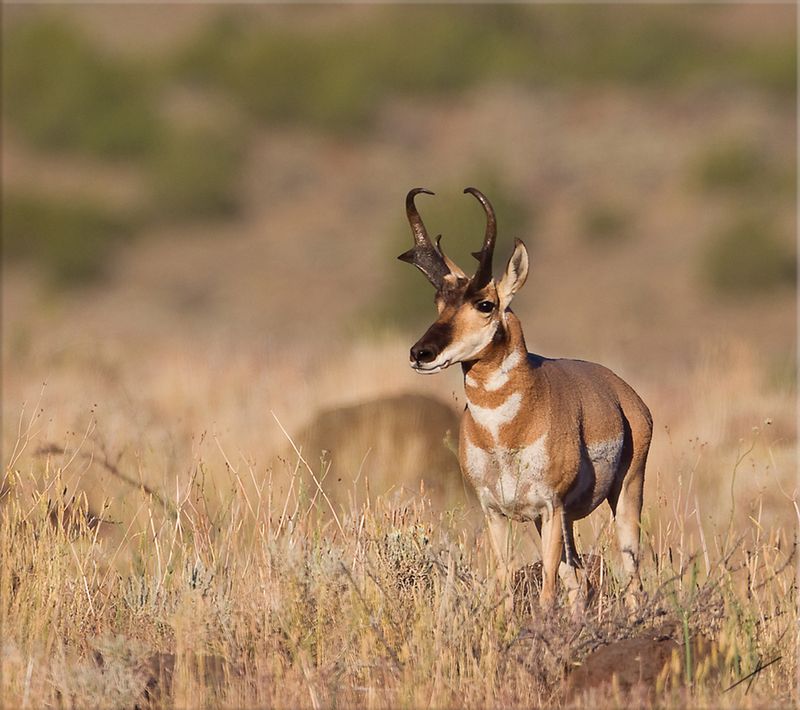
A key factor in the pronghorn’s speed is its highly efficient respiratory system. Possessing large lungs and a powerful heart, it can take in substantial amounts of oxygen, fueling its muscles for prolonged exertion. This system supports both its top speed and remarkable endurance. During high-speed chases, oxygen delivery is crucial, and the pronghorn’s body is superbly adapted for this. Such respiratory efficiency ensures that it can maintain its velocity without succumbing to fatigue. The pronghorn’s ability to breathe efficiently while running fast is a testament to its specialized evolution.
Social Structure
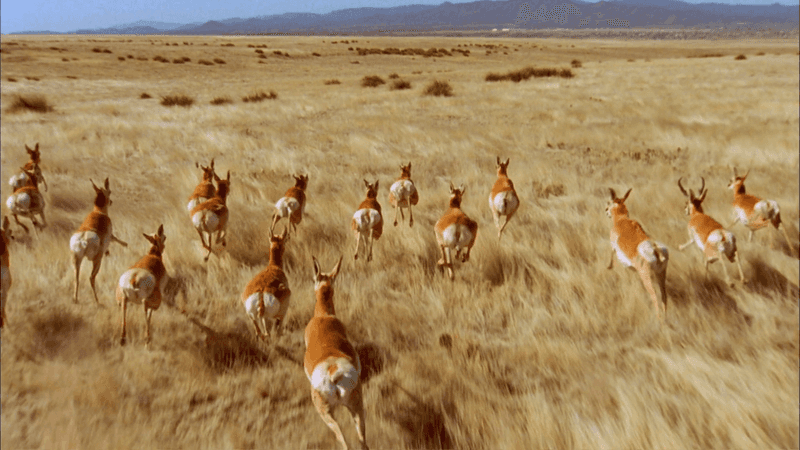
Pronghorns exhibit a fascinating social structure, often moving in groups that enhance their survival strategies. This social behavior includes cooperative vigilance, where individuals take turns watching for predators, allowing others to rest. Such group dynamics offer protection and increase their chances of survival. The social bonds within a herd facilitate communication, especially crucial during migrations and when evading predators. This aspect of pronghorn life underscores the importance of community and cooperation in the wild. Their social interactions are as essential to their survival as their physical adaptations.
Visionary Abilities
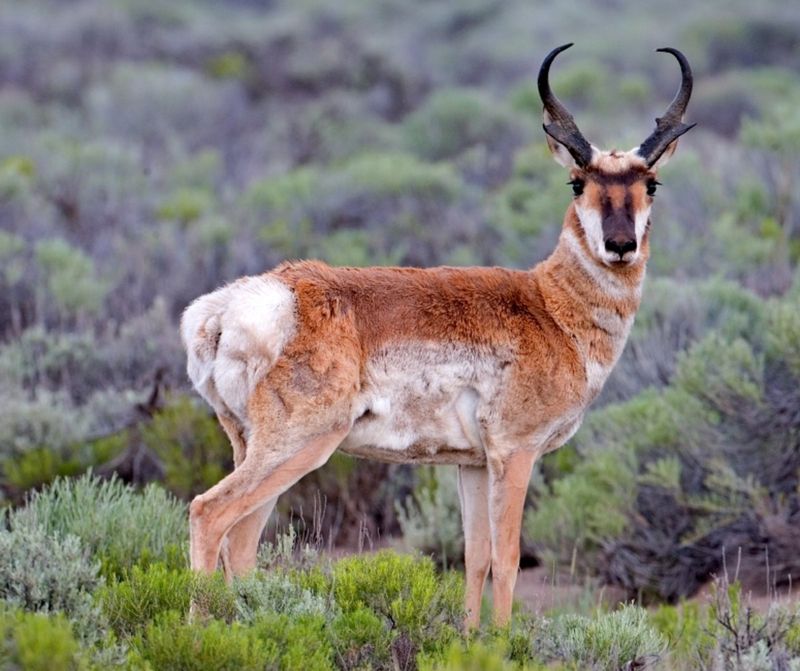
Pronghorns possess extraordinary vision, a crucial element of their survival toolkit. They can detect motion from a distance, complementing their speed with acute awareness. This visionary ability allows pronghorns to spot predators early and react swiftly. Their large eyes, positioned on the sides of their heads, provide a wide field of view, making them vigilant and responsive. This keen eyesight is vital during high-speed chases, ensuring they navigate obstacles effectively. The combination of speed and sight makes the pronghorn a highly adept survivor, perfectly adapted to its environment.
Habitat Range
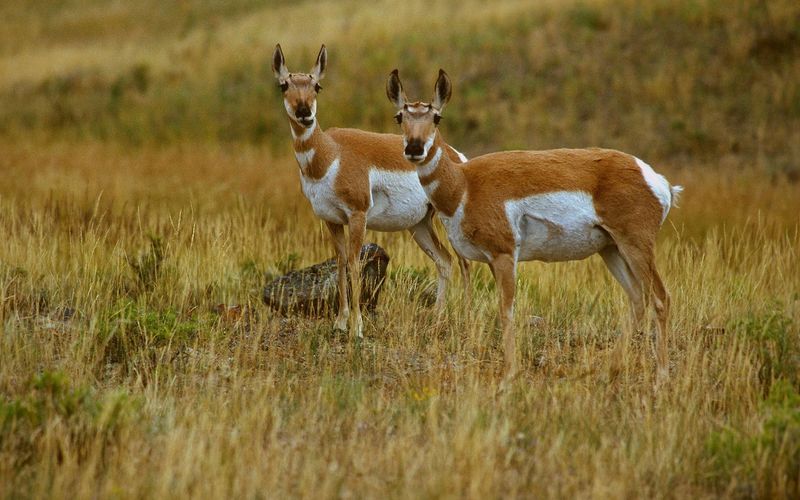
The pronghorn’s habitat range is as expansive as its speed is impressive. Found across North America’s grasslands, deserts, and prairies, these diverse habitats require adaptability. Speed is crucial in these open spaces, where cover is minimal and threats are omnipresent. The pronghorn’s ability to thrive in such environments highlights its evolutionary success. Its range is a testament to its adaptability, with speed being a central factor in its ability to exploit various habitats. This adaptability ensures the pronghorn’s resilience and continued survival across changing landscapes.
Genetic Legacy
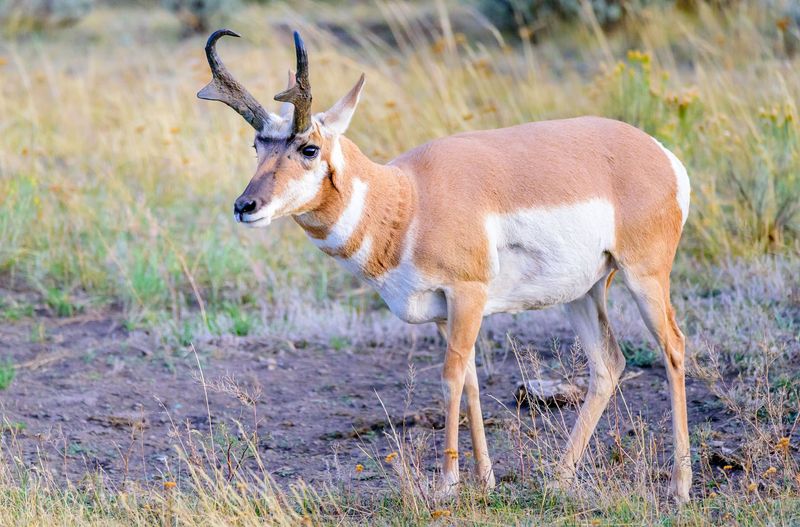
The genetic legacy of the pronghorn reflects its long history of adaptation. Its speed and endurance are encoded in its DNA, passed down through generations. This genetic heritage equips each new generation with the tools for survival. While many species face threats from changing environments, the pronghorn’s genetic traits provide a buffer against such challenges. Understanding its genetic makeup offers insights into evolutionary processes. The pronghorn’s legacy is not just its speed, but also its resilience, an enduring testament to the power of evolution.

